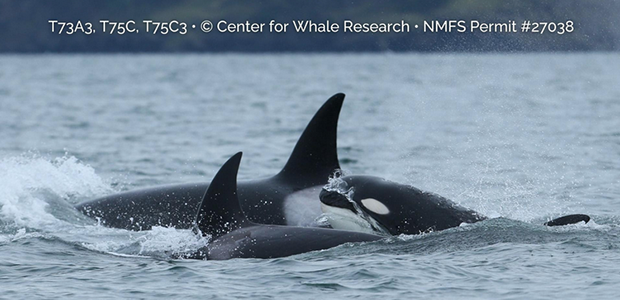— from Mike Welding, NAS Whidbey —
Search and Rescue crews from NAS Whidbey Island conducted three separate missions over the weekend. Missions included one mountain rescue near Snow Lake in the Snoqualmie Pass and two Medical Evacuations (MEDEVACs) – one from Olympic Medical Center in Port Angeles, Wash., and the other from Friday Harbor in the San Juan Islands, Wash.
On Saturday, Mar. 4 the SAR Alert crew received notification that a skier had been caught in an avalanche near Snoqualmie Pass and had suffered a broken femur. The avalanche occurred early Saturday morning and it took hours for the injured skier’s friend to climb to a ridge to set off his Personal Locator Beacon and make a call to rescue services. The request for help came just after 6:30 p.m. and because the King County helicopter was tasked with another call, NAS Whidbey Island SAR accepted the mission.
Following a thorough brief with the chain of command and weather briefers at the base, the crew determined that they would have the weather to conduct the mission and launched just after 7 p.m., arriving on scene only 30 minutes later. When the crew arrived at the skier’s location they encountered areas of patchy fog and snow showers and realized that they would have to conduct the rescue quickly because of weather that was quickly moving into the valley.
As they flew on top of the survivor, the head lamps of the Snoqualmie Mountain Rescue personnel were visible. The crew calculated the required power to conduct the hoist recovery of the patient using the rescue litter and then made an approach into a high hover above the scene. Hospitalman 3rd Class Austin Shutt, the Search and Rescue Medical Technician (SMT), rappelled 160 feet to the patient and immediately began stabilizing his broken femur and preparing him for pickup. At the same time, the aircraft commander notified the SMT that he would have only minutes to get the patient into the litter and to be ready for extraction because of a blowing snow flurry that was quickly reducing the visibility around the aircraft. Working as quickly as possible, Shutt, with help from the mountain rescue team, stabilized the patient’s leg, loaded him into the litter and were hoisted into the aircraft.
As soon as the helicopter departed the hover with both the SMT and patient onboard, the area around the accident location became completely obscured by heavy snow. Unable to proceed directly to Harborview Medical Center in Seattle, because of the deteriorating weather conditions, the crew determined that landing at The Summit at Snoqualmie Alpental ski resort and transferring the patient via ambulance would be the best and safest option. They arrived at the ski resort only minutes later where the patient was delivered to a waiting ambulance.
As weather closed in on the mountain summit and visibility reduced to almost zero, the crew elected to shut down the aircraft and remain on the summit overnight in hopes that the weather would allow them to take off and return to Whidbey Island the following day. Snoqualmie Fire and Rescue graciously offered the crew warm food and a place to sleep for the evening, providing the sustenance that would be required for the next day’s flight. The crew received a weather brief first thing in the morning, and determined that the weather would be sufficient to take off and return home. After clearing the accumulated ice and snow off of the helicopter and conducting a pre-flight inspection, the crew started the aircraft and departed the mountain summit just before 8 a.m., arriving at NAS Whidbey Island at 8:30 a.m.
Naval Aircrewman 1st Class Cory Hedges said, “In the beginning, the mission met all the criteria to be ‘cut and dry,’ but the weather in the mountainous environment can change in a matter of minutes and does not always progress as forecasted and that was the case tonight. The crew did a phenomenal job using Operational Risk Management and Crew Resource Management to get this patient to a higher level of care.”
The first of two MEDEVACs happened last Friday morning. The SAR Alert crew was preparing to take off for a routine training flight when they were notified of a 62-year-old-female patient with a heart condition who needed immediate medical evacuation from Olympic Medical Center in Port Angeles, Wash. The crew prepared the aircraft for departure and took off just before 9:30 a.m. and proceeded directly to the helicopter pad at the hospital, landing 20 minutes later. Once on deck, the SMT conducted turnover with medical personnel and then loaded the patient onto the aircraft. The crew departed Port Angeles for Bremerton Naval Hospital. Based on preflight planning, the crew knew that weather would be a factor on the way, so they remained low over the water to stay clear of low clouds and fog that had moved over land to the south. Upon landing at the hospital pad at 11 a.m., an ambulance was waiting to transfer the patient to Harrison Medical Center in Bremerton, Wash.
The second MEDEVAC occurred on Sunday evening, when the Alert crew was notified of a 71-year-old-male suffering from complications due to cancer requiring immediate medical evacuation from the PeaceHealth Peace Island Medical Center in Friday Harbor. The crew assembled and readied the alert aircraft for an immediate launch and left for the island airport just after 9 p.m., arriving 10 minutes later. The SMT conducted the patient turnover with local medical professionals, loaded him into the aircraft and the crew departed at 10 p.m. Weather along the route was significantly better than predicted, allowing the crew to fly directly to Snohomish County Airport (Paine Field) in Everett, Wash. where an ambulance was waiting. The patient was transferred onto the ambulance and the SMT accompanied him to Providence Regional Medical Center just after 10:30 p.m.
This was the first Rescue and the 11th and 12th MEDEVACs of 2017 for NAS Whidbey Island SAR, which has also conducted one Search, totaling 13 lives delivered to a higher level of care. In 2016, the unit conducted 51 missions including 14 MEDEVACS, 24 Rescues, and 13 Searches totaling 53 lives delivered to a higher level of care.
The Navy SAR unit operates three MH-60S helicopters from NAS Whidbey Island as search and rescue/medical evacuation (SAR/MEDEVAC) platforms for the EA-18G aircraft as well as other squadrons and personnel assigned to the installation. Pursuant to the National SAR Plan of the United States, the unit may also be used for civil SAR/MEDEVAC needs to the fullest extent practicable on a non-interference basis with primary military duties according to applicable national directives, plans, guidelines and agreements; specifically, the unit may launch in response to tasking by the Air Force Rescue Coordination Center (based on a Washington State Memorandum of Understanding) for inland missions, and/or tasking by the United States Coast Guard for all other aeronautical and maritime regions, when other assets are unavailable.
**If you are reading theOrcasonian for free, thank your fellow islanders. If you would like to support theOrcasonian CLICK HERE to set your modestly-priced, voluntary subscription. Otherwise, no worries; we’re happy to share with you.**







